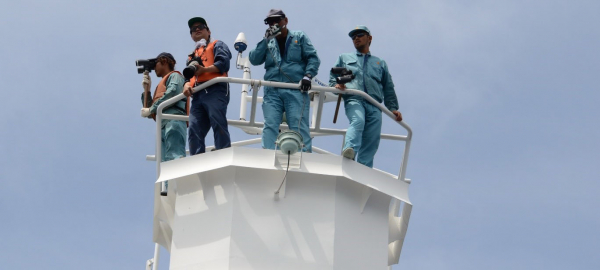Nineteen cetacean species recorded by the latest
IWC-POWER Research Cruise in the eastern North Pacific.
The results of the most recent IWC-POWER Research Cruise have been reported and endorsed at the IWC Scientific Committee Meeting in Bled, Slovenia. Nineteen different cetacean species were identified during the cruise which lasted sixty days and surveyed more than three thousand nautical miles. Good weather helped the team identify a large number of different species, but they were forced to scale back attempts to record marine debris, due to the large quantities present.
This fifth year of the IWC-POWER programme focused on an area that included the North Pacific Gyre, also known as the Great Pacific Garbage Patch. The primary purpose of this long term programme is to build greater understanding of abundance, distribution and stock structure for specified whale populations, but information on marine debris is also collected.
These data are used to identify the type and distribution of debris in the eastern North Pacific. Despite reducing debris recording time to just 15 minutes per hour, the researchers were still registering up to 86 items per session. These included 960 objects related to the fishing industry, wooden crates, metal, styrofoam and plastic, eleven tyres, and two refrigerators. Ten overturned boats were also assessed as having a possible relationship to the 2011 Tsunami in Japan.
Sperm whales were the most frequently sighted toothed whales. Thirty-three schools and fifty individuals were recorded. The most common baleen whales were Bryde’s, numbering six schools and the same number of individuals.
Data gathered included photographic and video records and a number of tissue samples. All will be assessed as part of this long term programme to learn as much as possible about whale populations and ultimately, detect population trends in this little-studied area of the North Pacific.
IWC-POWER is an international research collaboration, coordinated by the IWC and designed by the IWC Scientific Committee, with a research vessel and crew members kindly donated by the Government of Japan. The research team is nominated by the IWC Scientific Committee and this year comprised scientists from the Republic of Korea and Mexico, as well as Japan. POWER follows the SOWER research programme. Over thirty two years, SOWER accumulated an extensive archive of information about cetaceans in the Southern Ocean which is still in active use today.
To read more about the POWER programme click here.

